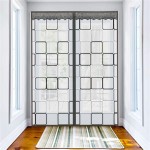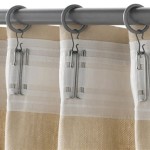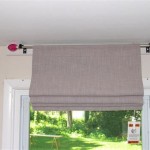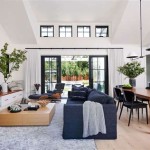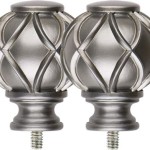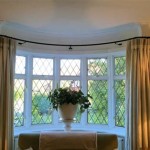Red Curtains: A Living Room Design Statement
Red curtains can be a bold and transformative design element in a living room. The color red, associated with energy, passion, and excitement, can inject personality and visual interest into a space. However, integrating red curtains successfully requires careful consideration of design principles, color palettes, and the overall desired aesthetic.
This article explores various ideas for incorporating red curtains into a living room, offering insights into different styles, material choices, and complementary design elements. The aim is to provide a comprehensive guide to help homeowners and designers create a cohesive and visually appealing living space featuring the striking presence of red curtains.
Choosing the Right Shade of Red
The selection of the appropriate shade of red is paramount to achieving the desired effect. Red encompasses a wide spectrum, ranging from deep, saturated hues like burgundy and crimson to lighter, more vibrant tones such as cherry and scarlet. The choice should be guided by the existing color scheme of the living room and the desired ambiance.
Deeper shades of red tend to create a sense of warmth, luxury, and intimacy. They complement rooms with rich, dark wood furniture and create a sophisticated, formal atmosphere. Burgundy, for example, can pair well with shades of brown, gold, and forest green.
Lighter shades of red are more energetic and playful. They add a pop of color and can brighten up a room with limited natural light. Cherry red, for instance, can be paired with whites, creams, and light grays to create a modern and cheerful aesthetic. Scarlet, with its slightly orange undertones, brings warmth and vibrancy and works well in bohemian or eclectic settings.
Consider the undertones of the red being selected. Some reds lean towards a cooler, bluish tone, while others have warmer, yellowish undertones. Matching the undertones of the red with the existing color palette will create a more harmonious and balanced look. Sampling the fabric in the room's lighting is crucial, as the perceived color can shift dramatically depending on the light source.
Selecting the Appropriate Fabric and Style
The choice of fabric is as important as the color itself. The material of the curtains will impact the drape, texture, and light-filtering properties of the window treatment. Different fabrics lend themselves to different styles and aesthetics.
For a luxurious and formal look, consider velvet or silk curtains. Velvet drapes beautifully and adds a touch of opulence to the room. It also provides excellent insulation and light blockage. Silk offers a similar level of elegance but is more delicate and requires careful handling. Both velvet and silk are best suited for more formal living rooms that are not subjected to heavy daily use.
Linen and cotton are more casual and versatile options. Linen has a natural, relaxed texture and allows some light to filter through, creating a bright and airy feel. Cotton is more durable and easier to care for than linen, making it a practical choice for family living rooms. Both linen and cotton can be dyed in a wide range of red hues and work well in both modern and traditional settings.
For a more modern and minimalist look, consider synthetic fabrics like polyester or rayon blends. These fabrics are often wrinkle-resistant and easy to clean, making them a practical choice for busy households. They also offer a wide range of textures and finishes, from matte to sheen.
The style of the curtains should complement the overall design of the living room. Panel curtains are a classic and versatile option that works well in most settings. Grommet curtains have a modern, clean look and are easy to hang and operate. Pleated curtains add a more formal touch and are suitable for more traditional living rooms. Consider adding a valance or cornice to further customize the look of the curtains.
Integrating Red Curtains with the Existing Color Palette
Successfully integrating red curtains into a living room requires careful consideration of the existing color palette. Red can be a dominant color, so it is important to balance it with other colors that complement and enhance its impact.
One popular approach is to pair red curtains with neutral colors like white, cream, gray, or beige. These neutral colors provide a calming backdrop that allows the red curtains to stand out without overwhelming the space. White walls, for example, will create a crisp and clean contrast with red curtains, while cream walls will create a softer and warmer ambiance.
Another approach is to use complementary colors to create a more dynamic and visually interesting space. Green is the complementary color of red, and incorporating shades of green in the room, such as in the furniture, accessories, or artwork, can create a harmonious and balanced look. However, it is important to choose the shades of green carefully, as some greens can clash with certain reds. Earthy greens, such as olive or sage, tend to pair well with most reds.
For a more monochromatic look, consider using different shades of red throughout the room. For example, pair deep red curtains with lighter red throw pillows or a red accent rug. This creates a cohesive and sophisticated look that is visually appealing but not overwhelming.
When incorporating other colors into the room, consider the 60-30-10 rule. This rule suggests that 60% of the room should be the dominant color, 30% should be the secondary color, and 10% should be the accent color. In this case, the neutral color could be the dominant color, the red could be the secondary color, and a complementary color like green or gold could be the accent color.
Accenting with Furniture and Accessories
The furniture and accessories in the living room should complement the red curtains and contribute to the overall design aesthetic. The goal is to create a cohesive and balanced space where all elements work together harmoniously.
If the red curtains are the focal point of the room, consider choosing furniture in neutral colors like white, gray, or beige. This will prevent the room from becoming too visually busy and allow the red curtains to stand out. Alternatively, consider using furniture with subtle red accents to tie the room together. For example, a gray sofa with red throw pillows can create a cohesive and stylish look.
The choice of accessories can have a significant impact on the overall ambiance of the room. Consider using accessories with metallic accents, such as gold or silver, to add a touch of glamour and sophistication. Gold picture frames, lamps, or decorative objects can complement the warmth of red curtains and create a luxurious feel. Silver accessories can add a more modern and cool touch.
Artwork can also be used to enhance the design of the living room. Consider choosing artwork with red elements to tie the room together. Abstract paintings with red accents or photographs with red focal points can complement the red curtains and add visual interest to the space.
Rugs are another important design element to consider. A rug in a complementary color or pattern can help to ground the room and create a sense of cohesion. A neutral rug with a subtle red pattern can tie the room together without overwhelming the space. Alternatively, a bold rug in a contrasting color can add a pop of visual interest.
Lighting Considerations
Lighting plays a critical role in how red curtains are perceived and how they impact the overall ambiance of the living room. The type and placement of lighting fixtures can either enhance or detract from the beauty of the curtains.
Natural light is ideal for showcasing the true color and texture of red curtains. Maximize natural light by keeping windows clean and avoiding heavy window treatments that block the sun. During the day, the sunlight will illuminate the curtains and create a warm and inviting glow.
Artificial lighting is equally important, especially in the evenings or in rooms with limited natural light. Layered lighting is the best approach, combining ambient lighting, task lighting, and accent lighting to create a well-lit and visually appealing space. Ambient lighting provides overall illumination, task lighting is used for specific activities, and accent lighting highlights specific features, such as artwork or architectural details.
Consider using warm-toned light bulbs to enhance the warmth and richness of the red curtains. Cool-toned light bulbs can make the red appear less vibrant and may clash with the overall ambiance of the room. Dimmable light fixtures are also a great option, allowing to adjust the level of light according to the mood and time of day.
Accent lighting can be used to highlight the texture and drape of the red curtains. Uplighting, which shines light upwards, can create a dramatic effect and accentuate the height of the curtains. Downlighting, which shines light downwards, can highlight specific details and create a more intimate atmosphere.
The placement of lighting fixtures should also be considered. Avoid placing lighting fixtures directly in front of the curtains, as this can create harsh shadows and detract from their beauty. Instead, place lighting fixtures to the side of the curtains to create a more even and flattering light.
Maintaining and Caring for Red Curtains
Proper maintenance and care are essential to preserving the beauty and longevity of red curtains. The specific cleaning and care requirements will depend on the fabric type, so it is important to consult the manufacturer's instructions.
Regular dusting is essential to prevent dust and dirt from accumulating on the curtains. Use a vacuum cleaner with a brush attachment to gently remove dust from the fabric. Alternatively, use a lint roller to remove surface dust and debris.
Spot cleaning should be done immediately to prevent stains from setting. Use a mild detergent and a soft cloth to gently blot the stain. Avoid rubbing the stain, as this can spread it and damage the fabric. Test the cleaning solution on an inconspicuous area of the curtain first to ensure that it does not cause discoloration or damage.
Dry cleaning is recommended for delicate fabrics like velvet and silk. These fabrics can be easily damaged by washing machines, so it is best to entrust them to a professional cleaner. Choose a dry cleaner that has experience cleaning delicate fabrics and follow the care instructions provided by the manufacturer.
To prevent fading, avoid exposing red curtains to direct sunlight for extended periods of time. Consider using blackout linings to protect the curtains from the sun's harmful rays. Rotate the curtains periodically to ensure that they fade evenly.
Store red curtains properly when not in use. Fold them neatly and store them in a cool, dry place. Avoid storing them in damp or humid environments, as this can lead to mold and mildew growth. Use garment bags to protect the curtains from dust and pests.

Solid Color Single Panel Curtain

A Little Red Goes Long Way In Home Decor Cococozy

12 Best Red Room Ideas How To Decorate With

Red Living Room Ideas For Your Home Voila Voile

Living Room Interior Design

Are The Red Drapes Problem What S Wrong With My Living Room

Lush Decor Red Solid Rod Pocket Light Filtering Curtain 42 In W X 84 L Set Of 2 A00752q12

How To Style A Living Room With Red Sofa Top Tips And Ideas

Vogol Red Embroidered 80 Blackout Curtains For Living Room Luxury Velvet Curtain Window Panels Bedroom 1 Set W52 Xl84

Tan And Red Living Room With Toile Curtains Transitional



